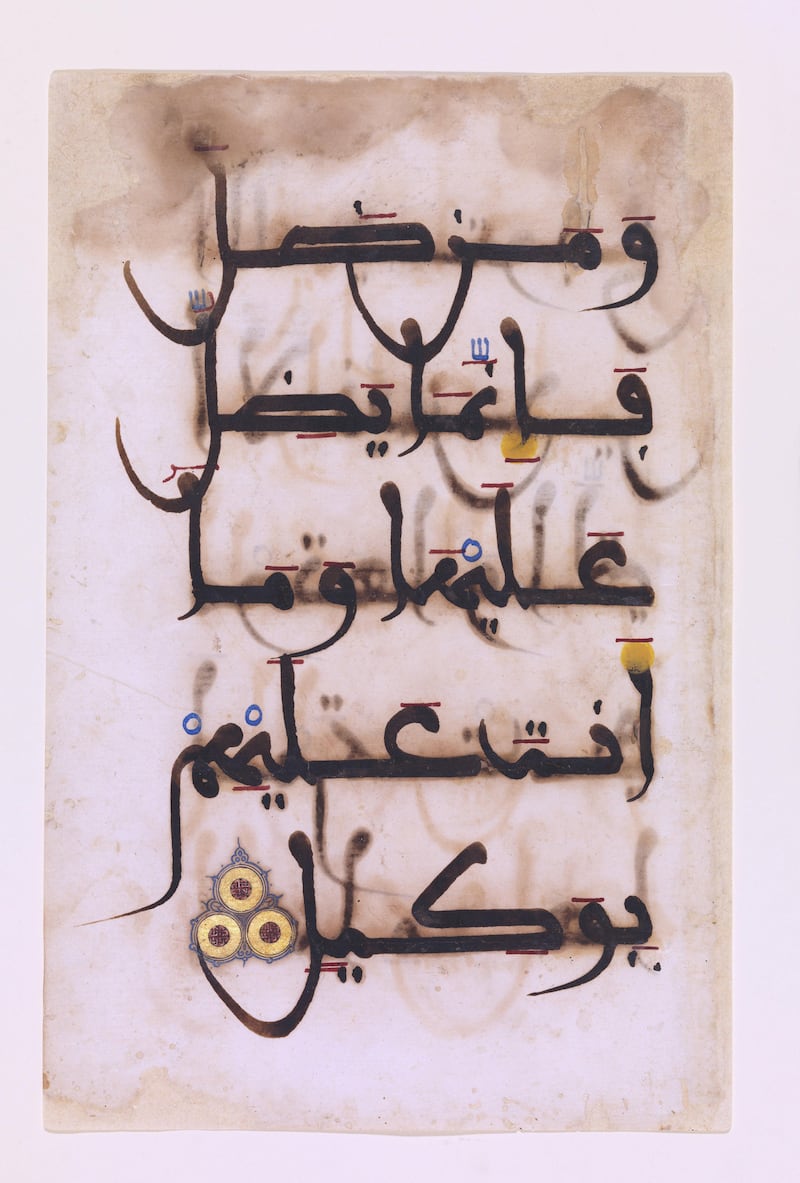Refined over hundreds of years, Islamic calligraphy has grown to become one of the major forms of art in Islamic culture.
Launching during London's Frieze week, a showcase of 32 masterworks of Islamic calligraphy will be exhibited from October 5 until November 10. Framed panels and complete manuscripts will celebrate the golden age of Islamic calligraphy, which was developed by those who sought to preserve the word of the Quran in a written form. Initially written on papyrus and parchment, the adoption of paper revolutionised the practice and saw libraries in the Muslim world grow to contain thousands of texts.
Sam Fogg, a company that specialises in art of the European Middle Ages, with departments also focusing on Islamic and Indian art, is placing the large show on display in its London gallery. It will be the only gallery holding an exhibition devoted to Islamic calligraphy during Frieze week.
The exhibition explores the formation of the cursive scripts and the developments in format – from very large to pocket-sized – and the innovations and sophisticated ways of expression found in the art form.
Andrew Butler-Wheelhouse, an Islamic art specialist for Sam Fogg, explains: "The system of writing which developed as a result of wanting to record and copy the Quran produced an art form which found many varied and beautiful forms of expression. Calligraphy itself, though seen by many in the West as a fairly uniform artistic expression, actually has many forms and quite different forms of expressions.
___________________
Read more:
[ Zarah Hussain's Numina gives traditional Islamic patterns a digital overhaul ]
[ World's first interactive online Quran launched ]
[ Pouran Jinchi’s ‘Line of March’ to make world debut in Dubai ]
___________________
"The success of the art form has been in many ways because of its adaptability – so that it can blend seamlessly into a monumental archway or dome of a mosque as it can also be used to decorate a pocket-sized manuscript."
There is not an extensive amount of material available for the English-language reader from AD1200 to AD1900 in terms of Islamic calligraphy, and the gallery hopes to address this shortfall with its diverse offering.
"Collections of this sort of calligraphy are not normally to be found in a single location," Butler-Wheelhouse says. "We are lucky that London has been for many years a centre for appreciating the arts of the pen and a centre for scholarship. As a result, we have been lucky enough over the years to put together a comprehensive collection of a series of great examples of calligraphic works which span from Spain to the borders of China."
Standout pieces include late-17th-century découpage calligraphy by Fakhri of Bursa. The artist is widely recognised as the Ottoman master of découpage – the art of attaching colourful paper cut-outs and elements such as gold leaf and floral decoration. The work was created during what is now thought of as his heyday.
Most of his known works are kept in the Topkapı Palace library in Istanbul or in albums produced for Ottoman sultans.
"To think that each of the letters as well as the floral background have been cut out with a fine blade and then placed on a blue background," Butler-Wheelhouse says. "It is really a wonderfully fine piece of work."
Another strong piece is the Quran folio from Andalusia. It is rare to come across examples such as this that have survived from the Islamic period in southern Spain – this folio would have been part of a grand Quran section produced for an elite member of the Muslim community of Al-Andalus.
The Rhythm of the Pen and the Art of the Book: Islamic Calligraphy from the 13th to the 19th Century runs from today until November 10 at Sam Fogg, Clifford Street, London. For more information, visit www.samfogg.com/exhibition/17-islamic-calligraphy





